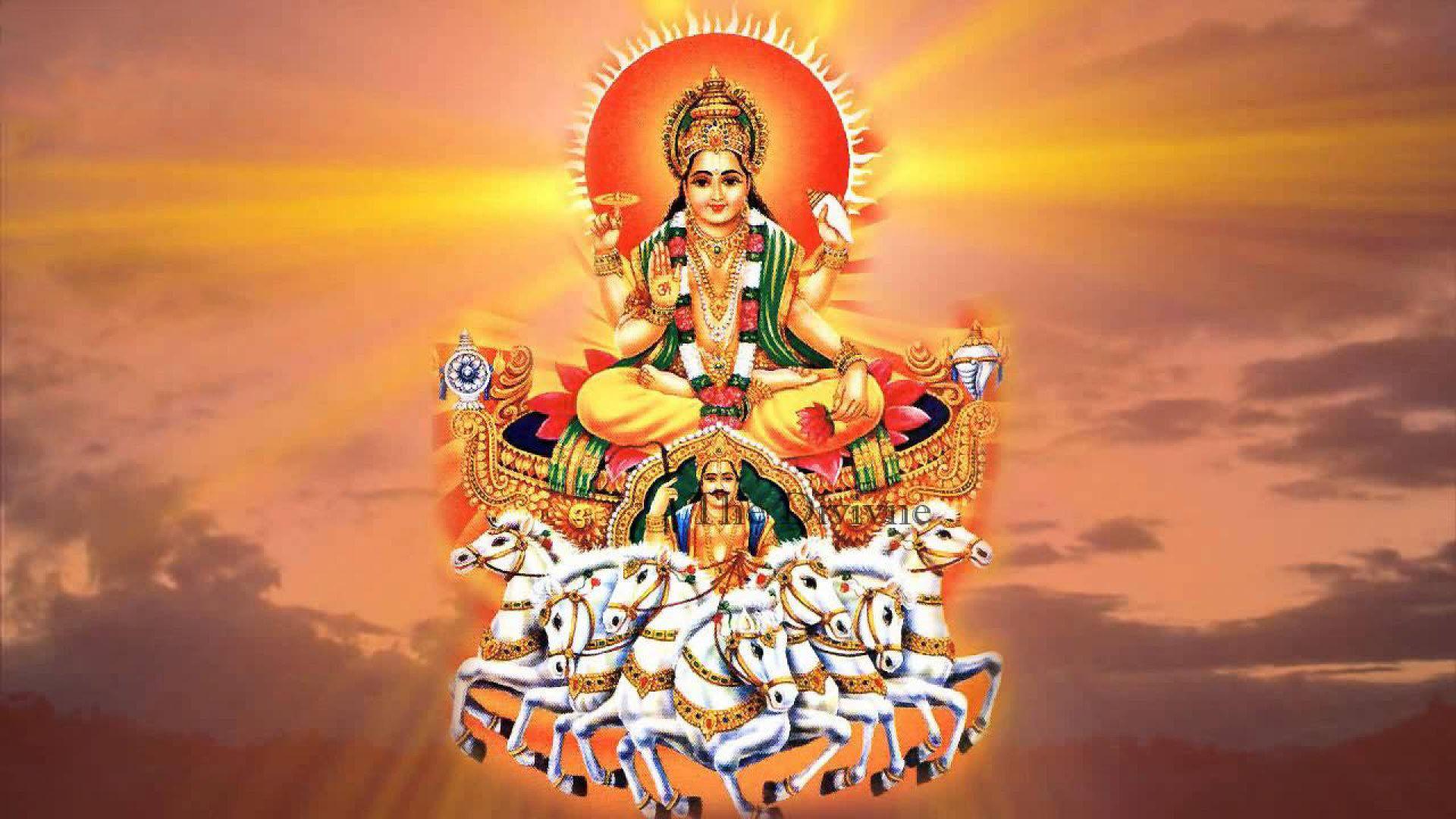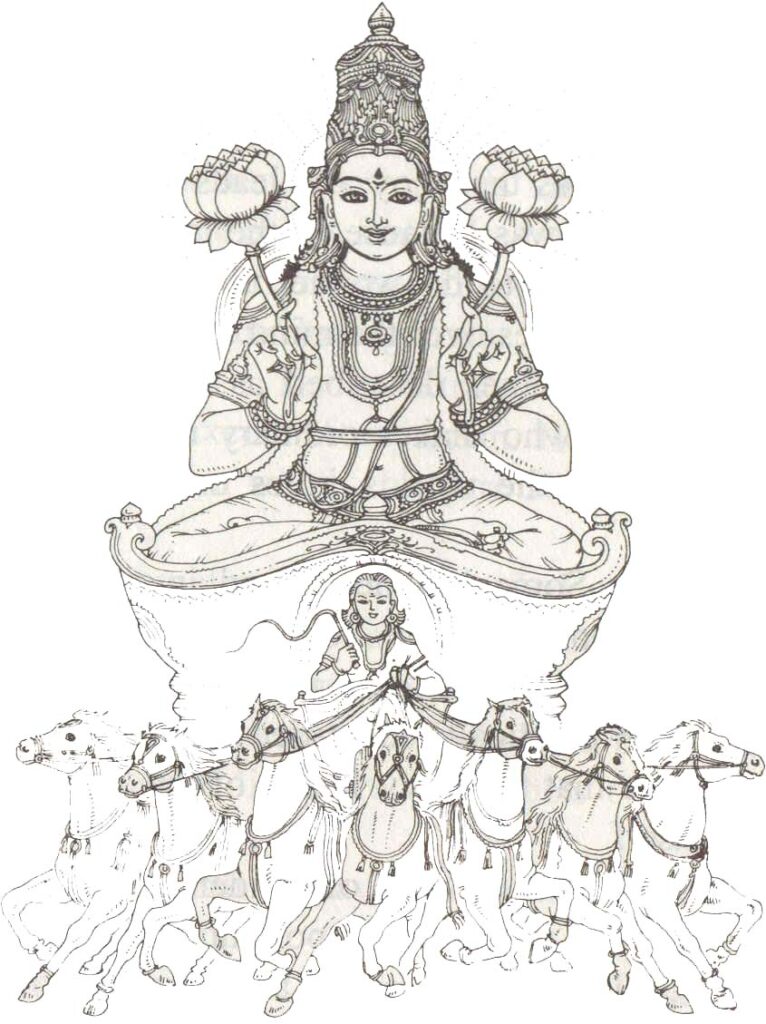
Surya, also known as Aditya or Vivasvān, is the Hindu god of the sun. Surya is a significant deity in Hinduism and has been worshiped for thousands of years. Here are some key aspects of Surya as a god:
- Solar Deity: Surya is the personification of the sun in Hindu mythology. He is often depicted as a radiant figure with a golden body, riding a chariot drawn by seven horses, which represent the seven colors of the rainbow. The sun’s rays are his arms.
- Source of Light and Energy: Surya is considered the source of light, warmth, and energy in the universe. He provides life-giving energy to all living beings and is essential for sustenance on Earth.
- Cosmic Order: Surya is associated with the concept of dharma (righteousness) and the maintenance of the cosmic order. He is seen as a symbol of truth, duty, and moral law.
- Daily Rituals: Worship of Surya is a part of daily Hindu rituals. Many people perform Surya Namaskar (sun salutation) as a form of physical exercise and devotion, especially in the practice of yoga.
- Depictions in Hindu Iconography: In depictions, Surya is often shown with two hands, one holding a lotus, and the other in a blessing gesture. He is sometimes accompanied by his consorts, Usha (Dawn) and Chhaya (Shadow), and depicted in various forms, such as Bhaskara (the illuminator) and Aruna (the charioteer of the sun).
- Chhaya Surya: Chhaya Surya, or the shadow aspect of Surya, is also recognized in Hindu mythology. Chhaya was the wife of Surya and the mother of Shani (Saturn). Her story is often associated with patience and devotion.
- Associated Mantras and Hymns: The Gayatri Mantra, one of the most sacred and revered mantras in Hinduism, is dedicated to Surya. It is a prayer for the illumination of the mind and the awakening of spiritual wisdom.
Surya is widely worshiped in India, and there are dedicated temples to Surya, such as the Konark Sun Temple in Odisha. He is also a central figure in the Rigveda, one of the oldest sacred texts of Hinduism. In addition to Hinduism, Surya is venerated in other Indian religions and cultures, such as Jainism and Buddhism, where he symbolizes enlightenment and wisdom.

Surya or the sun, often identified with Aditya, Savitr and Pusan, is another important Vedic deity. He is extremely brilliant and rides in an exquisitely beautiful chariot drawn by seven horses. He is compared to a bird that flies in the sky and is described as the jewel of the sky. He gives light, produces day and night, gives power and strength to the living beings, makes them active and destroys their laziness and disease.
Savitr is the aspect of the sun before sunrise. He is goldening all over. He establishes people in their respective places. He gives life and energy and guides people in the right path.
The famous Savitr. GayatrI Mantra is dedicated to this Savitr.
The nourishing and life-supporting aspect of the sun is personified and praised as Pusan. He is exceedingly beautiful. He destroys the evil ones with the discus he wears. He looks upon all with an equal eye. He is extremely generous and ever ready to protect.
